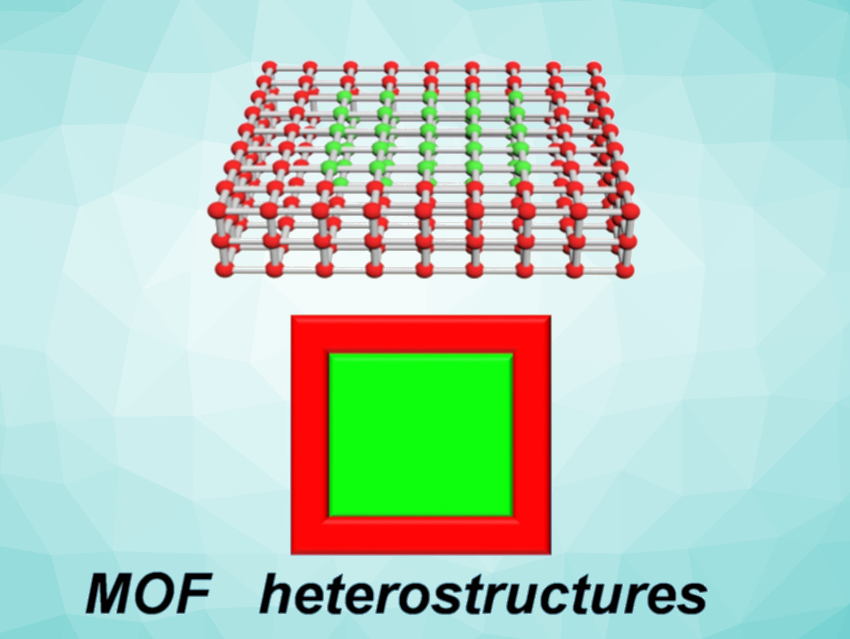Lanthanide-based metal–organic frameworks (Ln-MOFs) with multicolored heterostructures have potential uses, e.g., in anti-counterfeiting applications. However, Ln-MOF heterostructures developed thus far are limited to one-dimensional (1D) microrods. The growth of MOFs along two dimensions offers an additional dimension for information encoding. Thus, a method for the controlled synthesis of 2D MOF heterostructures would be useful.
Zhenhua Gao, Xiangeng Meng, Qilu University of Technology, Jinan, China, Yong Sheng Zhao, Institute of Chemistry, Chinese Academy of Sciences, Beijing, and colleagues have developed a strategy to construct 2D lateral Ln-MOF heterostructures based on a steric hindrance effect. Generally, MOF microstructures with directional channels are prone to growth along the porous channels in order to reduce the surface energy, forming 1D Ln-MOF microrods. If the porous channels are blocked with bulky guest molecules, the growth preference along the porous channels is reduced. The team used Ln-BTC MOFs, with Tb3+ or Eu3+ as the metal centers and BTC ligands (H3BTC = benzene-1,3,5-tricarboxylic acid) as linkers.
1,3,5-tris(4-carboxyphenyl)benzene (BTB) was chosen as the modulator. These molecules have three “arms” and can be partially trapped in the pore channel with one arm, while the other two arms sit at the interface with the solvent environment. This configuration can disturb the growth of the MOFs along one preferential direction, leading to a tendency to grow into a 2D morphology. Changing the amount of BTB allowed the team to control the aspect ratio of the resulting MOF crystals, from long rods to flat plates. To create the desired 2D heterostructures, Tb-MOFs (pictured in green) with different aspect ratios were initially synthesized and then used as seeds for the growth of Eu-MOFs (pictured in red).
With this approach, various Ln-MOFs heterostructures with tunable domains are accessible via a stepwise epitaxial growth procedure. The domain-controlled emissive colors in these 2D lateral Ln-MOF epitaxial heterostructures allow the creation of 2D photonic barcodes. The team anticipates that these photonic barcodes could be used for advanced anti-counterfeiting applications.
- Laterally Engineering Ln‐MOFs Epitaxial Heterostructures for Spatially Resolved Planar 2D Photonic Barcoding,
Zhenhua Gao, Shuo Yang, Baoyuan Xu, Tongjin Zhang, Shunwei Chen, Weiguang Zhang, Xun Sun, Zifei Wang, Xue Wang, Xiangeng Meng, Yong Sheng Zhao,
Angew. Chem. Int. Ed. 2021.
https://doi.org/10.1002/anie.202109336



